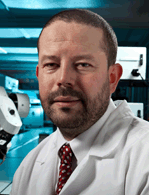Other Track AgendasBiobanking: Preparation, Storage & Analysis | Drug Discovery Automation - Chemistry Automation & Compound Management | Drug Discovery Automation - HCS & Cell Based Assays | Informatics for Automation | Liquid Handling and Robotics | Nano & Microfluidics | Next-Gen Sequencing Automation | Separation and Detection |

Wednesday, 30 May 201208:00 | Registration | 09:00 |  | Keynote Presentation High Content Cell Based Assays in Drug Discovery: Changing the HTS Paradigm
Hakim Djaballah, CEO, Institute Pasteur - Korea, Korea South
HCS has evolved over the course of nearly two decades, enabling us to perform highly complex cellular based HCA screens; with it came data explosion requiring special logistics. I will present examples and discuss resolutions to HCS data acquisition and management. |
| |
High Content siRNA and RNAi Screening | Session Sponsors |
| | 09:30 | High Content siRNA Screening for Modulatros of Receptor Expression/Compartmentalization and Cytoskeletal Organization
Maria Montoya, Head, National Center for Cardiovascular Research, Spain
High Content Screening (HCS) has been developed for RNAi-loss of function assays to search for modulators of caveolin-1 (Cav1) expression and compartmentalization and for Rab8-mediated cytoskeletal phenotypes using confocal microscopy imaging of tumor cell lines and multiparametric image analysis. | 10:00 | SiRNA Sequence Model: ReDesign Algorithm Based on Available Genome Wide Libraries and Screens
Karol Kozak, Head, ETH Zurich, Switzerland
Because not all siRNAs that are developed to a given target mRNA are equally effective, design tools have been developed based on experimental data to increase the knock-down efficiency of siRNAs. On this talk bioinformatics approach to validate design of siRNA libraries will be presented. New methods for better siRNA sequences will be proposed. | 10:30 | Coffee Break and Networking in Exhibition Hall | 11:15 | Actin' Out, Development of a High Content Screen Protocol for Investigation of the Interplay Between Epithelial Junctions and the Actin Cytoskeleton
Ann Wheeler, Advanced Imaging Facility Manager, Queen Mary University of London, United Kingdom
siRNA screen in primary human keratinocytes to identify novel candidate proteins involved in wound healing. | 11:45 | Identifying Factors Linked to Self-Renewal and Differentiation of Primary Muscle Stem Cells: An Integrative Approach of Mass Spectrometry and High-Throughput RNAi Screening
Johnny Kim, Group Leader, Max Planck Institute for Heart and Lung Research, Germany
We have performed a high-content lentiviral RNAi screen on purified primary muscle stem cells and have identified novel regulators of their self-renewal and differentiation. | 12:15 | Lunch Break and Networking in Exhibition Hall | 13:30 | Poster Viewing Session | 14:15 |  | Keynote Presentation Next generation High Content Screening – Big-Data Challenge
Urban Liebel, Group Leader/Head, Karlsruhe Institute of Technology, Germany
|
| |
Novel Research using HCS, HTS and Cell Based Assays |
| | 14:45 | The Importance of High Content Analysis for Stem Cell Culture, Differentiation and Media Development
Peter Zehetmayer, Sales Specialist Cell Technologies, GE Healthcare, United States of America
Veit Bergendahl, Head, Miltenyi Biotec GmbH, Germany
The talk covers the development of specialty media for translational research in the field of hematopoietic stem cells. We describe how we have developed and used a high-content screening platform via integrated HCR and FACS into commercial liquid handler platforms. | 15:15 | Coffee Break and Networking in Exhibition Hall | 16:00 | Identification of Highly Potent, Short and Stable Chemerin Analogs using High-Content Analysis and Other Cell-Based Assays
Carsten Grotzinger, Group Leader/Head, Charite University Medicine Berlin, Germany
CMKLR1 is a GPCR overexpressed in squamous cell carcinomas of the esophagus. We have advanced the wild-type C-terminal nonamer peptide of its ligand chemerin into highly stabilized analogues that retain both high affinity and receptor activation. Coupling optimized peptide variants to fluorescent dyes and chelators via different linkers enabled us to generate contrast for tumor imaging. | 16:30 | High Concentration Biochemical Fragment Screening on GPCRs
Andras Visegrady, Head, Lead Discovery Laboratory, Gedeon Richter, Hungary
The utility of high concentration biochemical fragment screening on membrane-bound drug targets less prone to biophysical detection will be presented. | 17:00 | High Throughput-High Content Phenotypic Drug Screening: Using the Power of Flow Cytometry
Kim Luu, Director, IntelliCyt Corporation, United States of America
Multiplexed technologies are increasingly being incorporated into discovery programs evaluating the efficacy and toxicity of compounds. We will discuss a novel system for performing multiplex phenotypic screening assays on suspensions of cells or beads. | 17:30 | High-Throughput Screening for Identification of BMP Signalling Agonists
Karen Vrijens, Postdoctoral Researcher, St Jude Children's Research Hospital, United States of America
Cell based luminescent assay has been developed for HTS identification of small molecule BMP-signaling activators, based on induction of Id-1 expression. Hit identification and follow-up strategy will be discussed. | 18:00 | Drinks Reception |
Thursday, 31 May 2012 |
Advances in Image Based Screening | Session Sponsors |
| | 09:30 |  | Keynote Presentation New Approaches to Solving Old Problems in High Content Imaging of Cells in vitro
Anthony Mitchell Davies, Director, Trinity College Dublin, Ireland
To address many of the issues surrounding the use of cell based assay systems in High Content Imaging, we have developed a novel Micro-Plate Bioreactor Array and 3D assay technologies. In this presentation we will examine the tangible benefits of these technologies and how these new assay tools may be routinely incorporated into automated HCS/A workflows. |
| 10:00 | Automating High-Content Imaging: A Case Study
Katya Tsaioun, CSO, Cyprotex, United States of America
High-content imaging technology while providing a lot of information to discovery teams that would not be available from single-parameter end points, inherently is not high-throughput due to time required for acquisition and processing of the large amount of data it collects. As this technology is used in primary screening, hit-to-lead and lead optimization phases, there is an urgent need to make it more high-throughput in order to realize the full potential. We will present a case study of successful full automation of experimental setup and processing of data that finally makes high-content also high-throughput. | 10:30 | Coffee Break and Networking in Exhibition Hall | 11:15 | Digital Holographic Microscopy (DHM): A Label Free Technology for Image-Based Screening Applications
Gerardo Turcatti, Director, Ecole Polytechnique Federale De Lausanne, Switzerland
In order to validate the use of this non invasive interferometric microscopy for monitoring morphological cell changes, we initially focus on cell viability screening assays by comparing the experimental outputs of DHM and standard fluorescence microscopy methods. | |
Advances In and Use of 3-D Screening Assays |
| | 11:45 | Novel, Simple Technology for Creating Physiologically Relevant 3-D Tissue Models
Rosemary Drake, Chief Scientific Officer, TAP Biosystems, United Kingdom
RAFT is a novel technology that enables collagen based cell cultures to be made simply, rapidly and consistently. The realistic environment enables co-cultures to be created and more complex cell behaviour to be studied. | 12:15 | Lunch Break and Networking in Exhibition Hall | 13:30 | Poster Viewing Session | 14:15 | 3D Chemical Compounds Screening Assay to Uncover Signaling Pathways Involved in CAFs-Remodeling Tumor Microenvironment
Cedric Gaggioli, Senior Postdoctoral Fellow/Research Fellow, Universite Nice Sophia Antipolis, France
| 14:45 | 3D Tumor Spheroids for Drug Discovery in Oncology
Carsten Wenzel, Scientist, Bayer Healthcare, Germany
We here present our current work on establishment and evaluation of High Content Analysis-based assays on 3D tumor spheroids for drug discovery in oncology. | 15:15 | Coffee Break and Networking in Exhibition Hall | 15:45 | 2D Versus 3D Quantitative Imaging Assays in vitro Applied to Metastatic Cells
Daniel Zicha, Head of Light Microscopy, Cancer Research UK, United Kingdom
| 16:15 | Drug-Induced Hepatotoxicity Prediction using Three-Dimensional Culture Models in High Content Screening Context
Thierry Dorval, Team Leader, Institut Pasteur Korea, Korea South
This oral will present a practical combination of 3D culture system associated with a dedicated 3D image analysis for hepatotoxicity assessment in a high content screening context. | 16:45 | Close of Conference |
|

 Add to Calendar ▼2012-05-30 00:00:002012-05-31 00:00:00Europe/LondonDrug Discovery Automation - HCS and Cell Based AssaysSELECTBIOenquiries@selectbiosciences.com
Add to Calendar ▼2012-05-30 00:00:002012-05-31 00:00:00Europe/LondonDrug Discovery Automation - HCS and Cell Based AssaysSELECTBIOenquiries@selectbiosciences.com